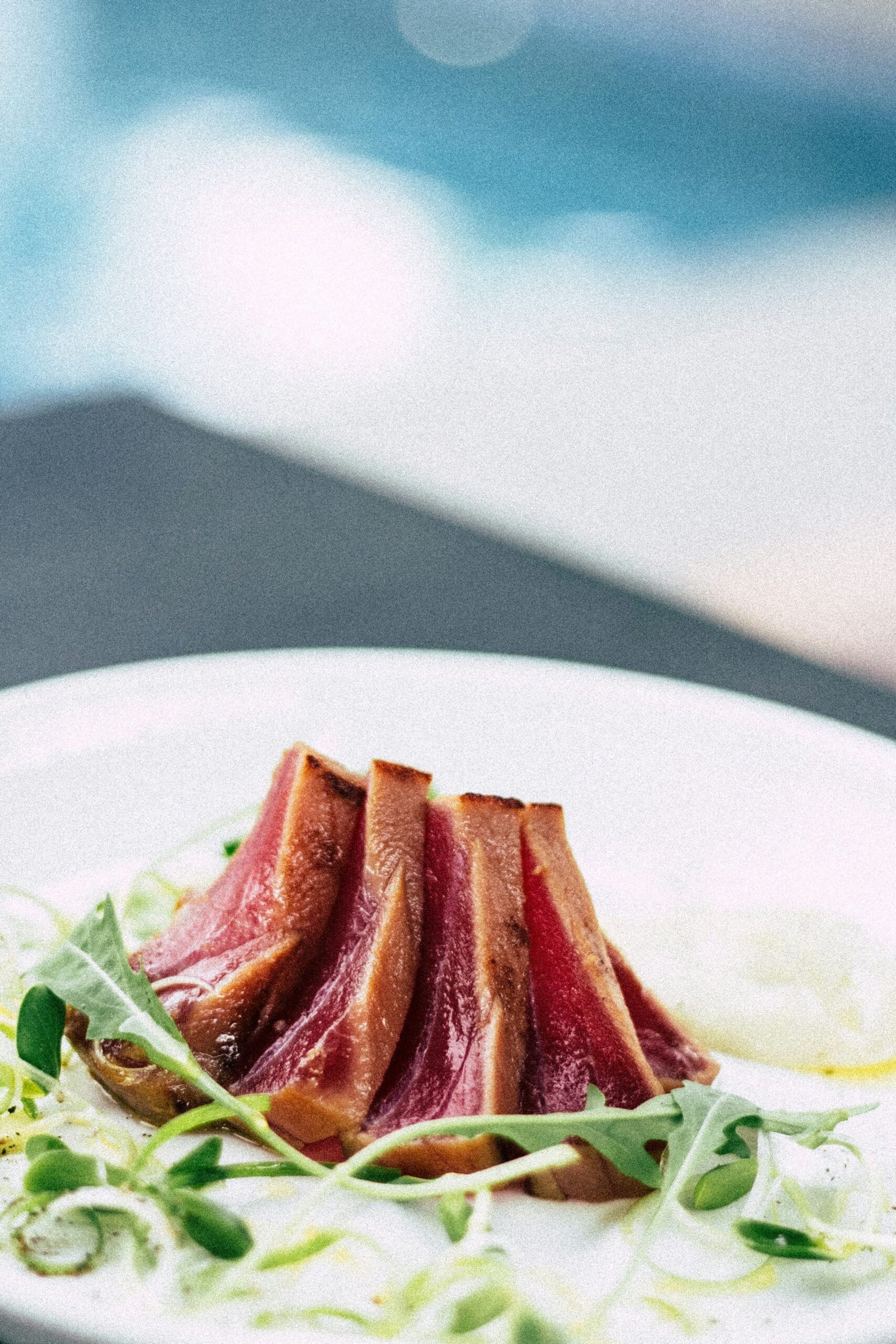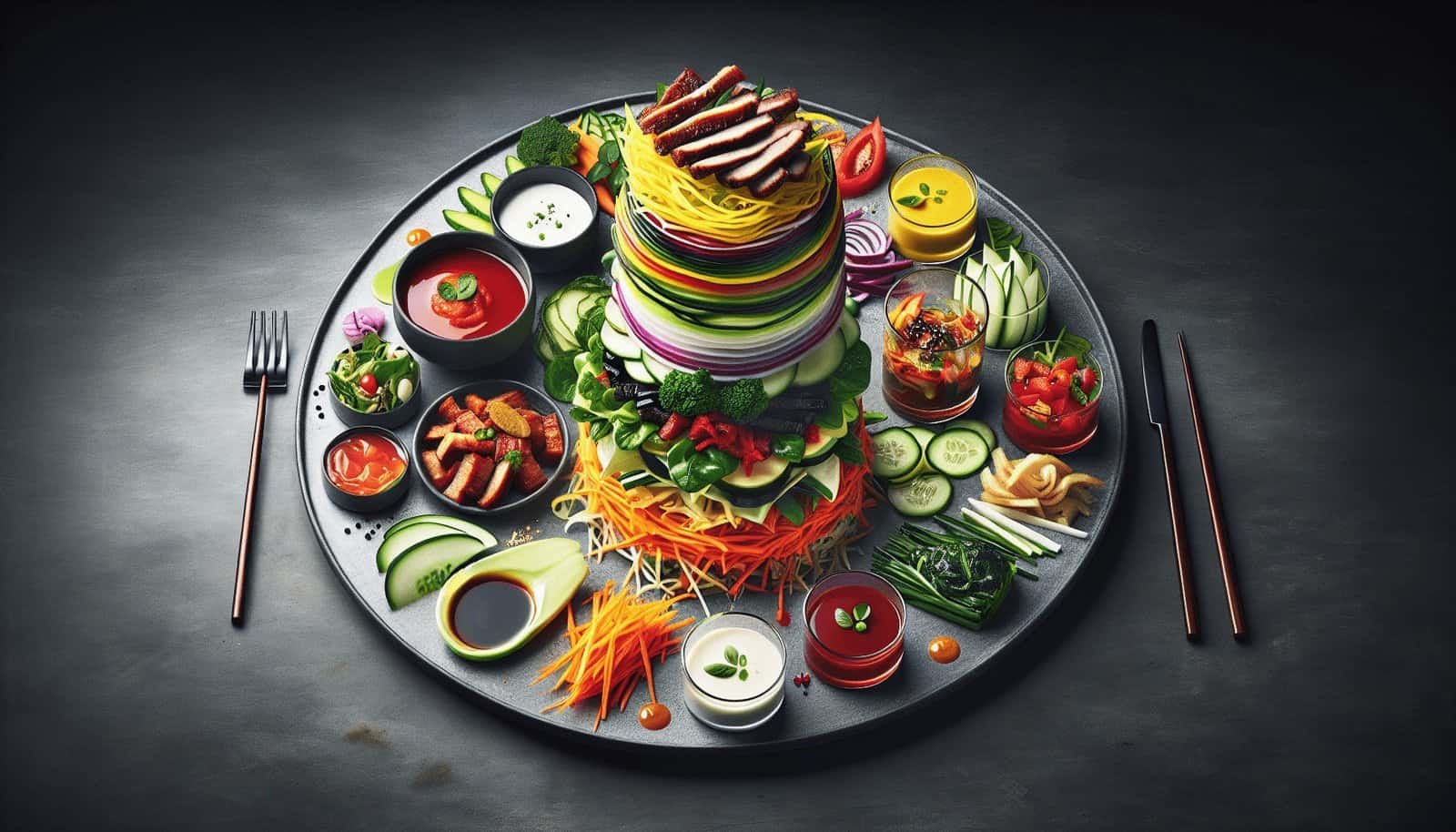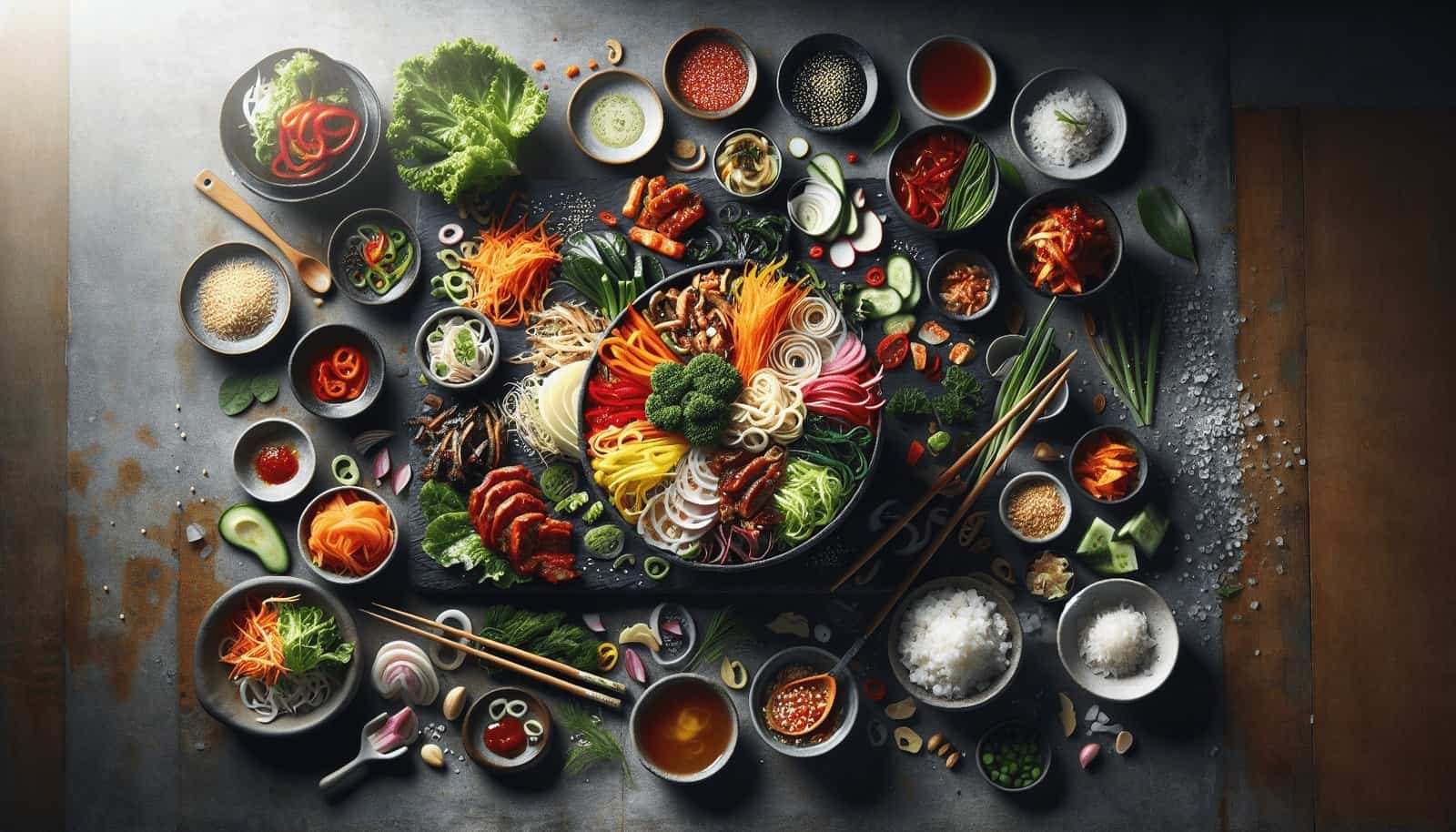In “Can You Share Ideas For Deconstructed Korean Dishes With A Modern Twist?”, you’ll delve into the wonderful world of Korean cuisine, reimagined with fresh, contemporary flair. You’ll discover innovative and mouthwatering ideas that transform traditional dishes into delightful, deconstructed masterpieces. Picture a Bibimbap salad where vibrant veggies and marinated beef are arranged artistically on a plate, allowing you to savor each ingredient’s distinct flavor. Or think of a Kimchi pancake that’s reimagined as crispy, bite-sized chips served with a spicy dipping sauce. This article invites you to unleash your creativity and explore how you can modernize Korean favorites with exciting, new presentations.
Can You Share Ideas For Deconstructed Korean Dishes With A Modern Twist?
Have you ever wondered how to elevate your love for Korean cuisine by giving it a contemporary spin? Deconstructing traditional dishes and piecing them back together with a modern twist can be a fun and delicious culinary adventure.
What Is Deconstructed Cuisine?
Deconstructed cuisine is all about breaking down a familiar dish into its basic components and serving them in an innovative way. This style of cooking allows you to appreciate the individual flavors and textures of each ingredient, creating an entirely new dining experience. Intrigued? Let’s dive deeper.

Why Deconstruct Korean Dishes?
Korean cuisine is rich with bold flavors, diverse textures, and a deep sense of tradition. Deconstructing these classic dishes can provide a fresh perspective, offering both aesthetic appeal and a novel taste experience. It also gives you an opportunity to experiment with ingredients, ensuring that each bite is a perfect balance of flavor and texture.

Popular Korean Dishes to Deconstruct
Before we start deconstructing, let’s take a look at some popular Korean dishes that lend themselves well to this type of experimentation:
- Bibimbap
- Bulgogi
- Kimchi Jjigae
- Tteokbokki
- Japchae
Deconstructed Bibimbap
Bibimbap is a well-loved Korean dish, traditionally consisting of mixed rice topped with assorted vegetables, meat, and a delightful fried egg. Here’s how you can deconstruct and reconstruct it in a modern way.
Ingredients:
- Steamed rice
- Assorted vegetables (carrots, zucchini, spinach, mushrooms)
- Marinated beef
- Fried egg
- Gochujang sauce
- Sesame seeds
Preparation:
- Vegetable Medley: Instead of mixing everything together, serve each vegetable separately in small dishes. Use different cooking techniques like grilling, steaming, or pickling to add variety.
- Marinated Beef: Sear the marinated beef, cut it into bite-sized pieces, and serve it on a small skewer.
- Fried Egg: Turn the fried egg into a poached or soft-boiled egg and serve it in a small cup.
- Gochujang Sauce: Offer the Gochujang sauce in a small dipping bowl.
Presentation:
Arrange all the components separately on a platter around a small bowl of steamed rice. This allows the diners to mix and match as they please, creating their perfect bite each time.
Deconstructed Bulgogi
Bulgogi, or marinated beef, is another classic that’s ripe for innovation. Let’s transform it into an upscale dish that’s perfect for a dinner party.
Ingredients:
- Sliced beef (ribeye or sirloin)
- Soy sauce, sugar, sesame oil, garlic (for marinade)
- Julienned vegetables (onions, scallions, carrots)
- Lettuce leaves
- Rice paper
Preparation:
- Beef: Marinate the beef and then grill it to perfection. Slice it into thin, bite-sized pieces.
- Vegetables: Lightly sauté the julienned vegetables in the leftover marinade until they are tender.
- Rice Paper Wrappers: Soak the rice paper wrappers per the package instructions.
Presentation:
Create a DIY bulgogi station by placing the beef, vegetables, and rice paper wrappers in separate bowls or trays. Add a small bowl of dipping sauce made from soy sauce, vinegar, and sesame oil. Guests can assemble their own bulgogi wraps, making it a fun interactive experience.
Deconstructed Kimchi Jjigae
Kimchi Jjigae, a hearty kimchi stew, is a staple in Korean households. Here’s how to transform it into an elegant appetizer.
Ingredients:
- Kimchi
- Tofu
- Pork belly or canned tuna
- Scallions
- Broth (fish or vegetable stock)
- Gochugaru (Korean chili powder)
Preparation:
- Kimchi: Serve the kimchi finely chopped in a small ramekin.
- Tofu: Slice the tofu and lightly grill or pan-sear it.
- Pork Belly/Canned Tuna: Choose either protein, slice it thinly, and cook it separately.
- Broth: Reduce the broth to a concentrated sauce by simmering with gochugaru and other seasonings.
Presentation:
Present each component separately on a wooden board. Pour the reduced broth into a small dipping bowl. Diners can enjoy picking pieces of tofu or kimchi and dipping them into the concentrated broth for an intensified flavor experience.
Deconstructed Tteokbokki
Tteokbokki is a popular street food made of chewy rice cakes and spicy sauce. How about turning it into a sophisticated small plate?
Ingredients:
- Rice cakes
- Gochujang-based sauce
- Fish cakes
- Boiled eggs
- Green onions
Preparation:
- Rice Cakes: Instead of the traditional cylindrical shape, slice the rice cakes into thin discs and lightly pan-fry them for a crispy exterior.
- Fish Cakes: Cut into small, manageable pieces and sauté them briefly.
- Boiled Eggs: Soft-boil the eggs and slice them in half.
- Gochujang Sauce: Prepare a thick, rich gochujang-based sauce.
Presentation:
Serve the crisped rice cakes, fish cakes, and halved boiled eggs on a stylish plate, drizzling the gochujang sauce artistically over the top. Garnish with finely chopped green onions for color and added flavor.
Deconstructed Japchae
Japchae, made from sweet potato noodles and stir-fried vegetables, can be reimagined as an elegant noodle salad.
Ingredients:
- Sweet potato noodles
- Assorted vegetables (spinach, carrots, mushrooms, bell peppers)
- Soy sauce, sugar, sesame oil (for dressing)
- Sesame seeds
Preparation:
- Noodles: Cook and cool the sweet potato noodles.
- Vegetables: Julienne and lightly sauté the vegetables separately.
- Dressing: Combine soy sauce, sugar, and sesame oil to create the dressing.
Presentation:
Arrange the noodles and veggies in separate sections on a large, flat plate. Drizzle the dressing over the top and sprinkle with sesame seeds. This set-up allows each diner to mix and match their components, creating their own perfect flavor combination.

Tips for Deconstructing Dishes
Use Quality Ingredients
Quality ingredients are crucial when the focus is on individual components. Fresh, vibrant vegetables, high-quality meats, and authentic sauces will make a noticeable difference.
Vary Cooking Methods
Using different cooking methods (grilling, steaming, sautéing) can introduce new textures and flavors to your dish.
Mindful Plating
Presentation plays a significant role in deconstructed dishes. Use stylish plates and small bowls to separate components and make the dish visually appealing.
Balancing Flavors
Ensure that each component is individually seasoned and flavorful, yet complementary to the other components on the plate.

Final Thoughts
Deconstructing Korean dishes with a modern twist not only adds an element of fun but also allows you to appreciate the distinct flavors and textures of each ingredient. Whether you’re hosting a dinner party or just experimenting in the kitchen, these creative spins on classic Korean recipes are sure to impress and delight.
Happy cooking!

